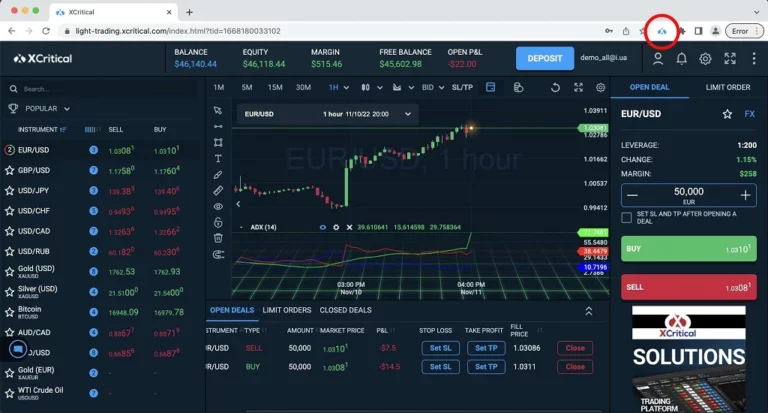Content
Before investing in a new token, you should make sure to do your own research. IEOs have a significant positive impact on stakeholders involved in Blockchain-based crowdfunding models. To understand how does IEO work and its specific impacts, let’s examine the advantages and disadvantages of IEO and ICO for https://www.xcritical.com/ each stakeholder group. This comparison will elucidate why IEOs are increasingly favored in the crypto space.
ICO vs. IEO vs. IDO: Breaking Down the Major Differences
Before you develop ieo meaning and host your crypto project on a hosting platform, you must provide users and investors with supporting details to encourage them to put their money into your scheme. Binance Launchpad, OKEx Jumpstart, Bittrex, Huobi Prime, KuCoin Spotlight, etc., are some of the best exchange platforms to host your blockchain project. With a fully developed MVP or a developing project prototype, you can select a crypto exchange to host your project. Many exchanges make up the crypto market, allowing crypto miners and developers to raise capital for their next big project.
- An IEO is a fundraising method in which a crypto exchange undertakes the responsibility for evaluating the project, attracting investors and managing the distribution of tokens.
- Its Initial exchange offering (IEO) platform, Binance Launchpad, is the most trusted exchange for your next crypto project.
- On the other hand, an initial exchange offering (IEO) raises funds via a crypto exchange to initiate a crypto token or digital asset in the market.
- IEO, Initial Exchange Offering, refers to token issuance for the first time on centralized exchanges such as Binance, Okex, FTX, etc.
- This setup not only helps ensure a smoother and more regulated transaction but also provides the projects with an immediate market presence.
- For example, cryptocurrency and blockchain startups can exchange their tokens for fiat currency or other cryptocurrencies.
History of IEOs: Evolution of Crypto Fundraising
ICOs generally release a whitepaper describing how a company will issue a coin and how it intends to use any funds raised. More trustworthy ICOs will have a long background of development, notable contributors, a community following it, and be active on social media with non-coin-hyping posts. Some ICOs require that another cryptocurrency be used to invest in an ICO, so you may need to purchase other coins to invest in the project.
Choosing Between ICO, IEO and IDO
It’s not uncommon for hyped cryptocurrencies to see big price increases very quickly after listing on an exchange. This means that unless you buy the coin quickly upon listing, you could end up paying a higher price than you would’ve previously. There’s no guarantee that an IEO—or any other crypto token listing—will result in a profit. However, many tokens pop in price after an IEO since demand is high and supply is limited. One of the most important differences between IEOs and ICOs for new crypto projects is the cost of each type of public sale. This is important because in an IEO, the exchange can limit who has access to a new token.

The Evolving Landscape of Blockchain Fundraising: ICOs, IEOs, and STOs
One of the biggest reasons that many crypto projects use ICOs is that they make a new token available to any investors. There’s no exchange acting as a middleman, so investors don’t need to be members of a specific exchange or own a specific token already. Many centralized exchanges let investors join an IEO with fiat as well as a wide range of cryptocurrencies. At many exchanges, investors can even use a credit or debit card to invest in an IEO. In addition, most IEO providers require investors to complete KYC requirements in order to join.
The market needed a more secure mechanism to raise funds for tokens and tokens that directly traded on exchanges. So, in the place of the ICO arose the “initial exchange offering,” or IEO, and later, the initial decentralized exchange (DEX) offering, or IDO. These mechanisms are similar to an ICO – token sales of new crypto projects. In July 2013, the first-ever crypto token sale or initial coin offering (ICO) took place.
Initial Exchange Offering (IEO) is a fundraising method where a cryptocurrency project sells its new tokens exclusively through a cryptocurrency exchange, under the exchange’s supervision. Given the increasing scrutiny by regulatory bodies, recent ICOs have shown a trend towards more transparency and compliance. This includes detailed disclosures in white papers and clearer communication of risks to potential investors. An IEO is easy for a user to participate in because they don’t need to use multiple wallets on different blockchains to perform on-chain transactions.
This approach leverages the exchange’s platform to reach a wider audience and gain instant market credibility. ICOs were the first method used by cryptocurrency companies to raise money.[7] Ethereum followed suit in 2014, raising about $18.3 million. Its blockchain project was based on the so-called charitable foundation model, in which investors donate to support the project. Once the crowdsale has been completed, generally the exchange where the IEO was conducted will list the coin on the exchange platform.

Having the initial listing on a trusted site lends a sense of validity to the new token, which may lead to people believing the exchange has vetted the project and ensured its legitimacy. Binance Launchpad, for instance, publishes research reports on all new tokens listed for an IEO. Those reports, however, aren’t critical of the projects they list; they simply explain how the projects work.
This, in turn, attracts market attention, which significantly contributes to the exchange’s growth and development. Upon the approval of an IEO project, the time required for listing on the Exchange is substantially shorter compared to ICOs. The time frame and probability of success for ICOs are considerably limited in contrast to IEOs. Understanding the IEO meaning in crypto is crucial for navigating this evolving landscape, and recognizing what is IEO will help investors make informed decisions. In another example, during a one-month ICO ending in March 2018, Dragon Coin raised about $320 million.
It’s a good idea to keep a close eye on social media channels as well, since this is where exchanges make most of their announcements about new token listings. This democratization is part of the core ethos of the crypto industry, and it can help attract investors to a new project. Many crypto enthusiasts are turned off by IEOs simply because they aren’t fully decentralized. Many investors who join an IEO believe that the price of the token will go up. During an IEO, researchers at a centralized exchange talk with the project team, scrutinize the project’s tokenomics, and come to a decision about whether to list the token.
An operational model for an IEO helps your potential investors to grasp your concept, decide on its soundness, and get convinced to fund the project. Here, we explain an Initial exchange offering and explore various tips for launching a successful IEO-based project. Adhering to legal and SEC regulations is mandatory for STOs, which typically means the exclusion of financial institutions and intermediaries. However, security tokens are still bound by federal securities laws, adding to the intricacy of their operation. Security Token Offering (STO) is often compared to a tokenized version of an Initial Public Offering (IPO).
Once an exchange is satisfied with a project, the exchange and project will choose a date and time for the IEO. They’ll also determine how many tokens will be available and what price they will be sold at. Unfortunately, this method of attracting investment in blockchain startups has several disadvantages, as well. Decentralized exchanges tend to be a lot smaller than centralized exchanges, meaning that the traffic that a new project receives might be substantially smaller than the traffic on an IDO.
While the fundraising organizations may have to pay fees for listing and a percentage of their tokens, the exchange will help them with marketing. Moreover, token issuers can take advantage of the exchange’s stable customer base to receive more contributions to their projects. There are other alternatives besides IEO that have been proven effective, including ICOs and STOs. These are security token offerings, initial token offerings, and initial decentralized exchange offerings. An Initial Exchange Offered, commonly referred to as IEO, is a crowdfunding event that is administered by exchanges. An ICO involves raising funds by selling coins directly to investors, whereas an IEO involves raising funds through an exchange’s crowdfunding platform.

